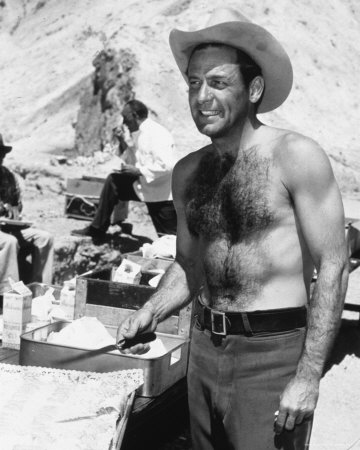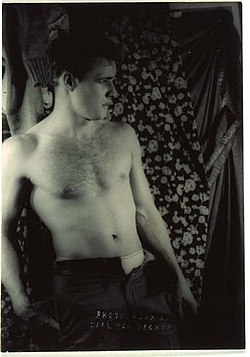
Since the beginning of the Seventh Art, the movie stars have been a major source of influence in the canons of beauty and fashion. Them learn to dress, to comb, to smile, to pose, smoking ... and fall in love with any of the many types of beauty for decades exported from the big screen.

In the picture, Audrey Hepburn in Billy Wilder's film Sabrina , do not you remember this wonderful dress to another, as seen not long ago?




Exactly Balmain dress that Penelope Cruz (the new muse of elegance and Hollywood glamor) looked at the Oscars two years ago. Personally I prefer the dress to Audrey, because, let me leave, the only word to describe it is orgasmic.

Gloria Swanson, with a beautiful neckline gown atelier. She was one of Hollywood's most stylish, especially in the 20's.
"For the decade of the 30, and Hollywood was so deeply involved in promoting fashion, accessories and cosmetics, which had become the most influential female beauty in the world. The fans copied the styles of dress and makeup of their favorite stars, or of photographs from magazines or directly from the movies. " (Richard Maltby and Ian Craven, Hollywood Cinema ).

Audrey Hepburn picking up his Oscar for Roman Holiday . This Givenchy, is considered by many the best dress she has walked a red carpet.
The foregoing defines perfectly the power and influence that have always characterized the film mecca when it comes to impose its standards of beauty and fashion audiences worldwide.
The list of examples is very numerous and well known: Veronica Lake's hairdo in the 40's, the fashion Bonnie in 1967 after the premiere of the film Bonnie & Clyde , the haircut at Farrow Mia garçon Rosemary's Baby (1968), and large shirts and jackets Diane Keaton in Annie Hall (1976). Males also have left their mark: the style of "bad boy" James Dean in Rebel Without a Cause , or Clark Gable, who brought down shirt sales in the United States when he showed his bare chest in It Happened One Night , and Marlon Brando, which caused the effect otherwise when one of them stuffed in their perfect muscles in A Streetcar Named Desire .
This influence is no less curious when you consider that emerged, in a way, against the current. Because early on, actresses and film stars were not "name": when the first farmers began to create films in series for mass consumption, not considered necessary to include in them the names of the protagonists. After all, the acting was a profession discredited, and theater performers, perfect strangers to pay for each study that, where appropriate, could be fired or replaced without problems.
Or so they thought.

(Nicole Kidman, Gucci, picking up his Oscar for his performance in hours)
tycoons had not foreseen that the public began to notice certain actors and actresses and write letters of admiration, reached studies aimed at "the butler mustache or curly blonde hair," he recalled William Goldman. "In 1910, America's most popular actress was known as the girl ... the Biograph Biograph was the company with which the girl had a contract." But that same year, Carl Laemmle, owner of IMP (later Universal) was that girl to his studio with a juicy contract and undertook to publish your name across the country: Florence Lawrence, had been born the first movie star.

However, Laemmle's strategy would not have taken effect without the aid of the invention of the first plane that gigantic face of the actors to make them a presence that squashes the stalls. Roman explains
Gubern: "the foreground, to magnify the presence of interpreters, allowed the public to recognize and become familiar with the actors and actresses most photogenic and attractive, and soon appeared a phenomenon of emotional identification and subsequent collective worship. "

Spotlight Marlon Brando (no words ...)
Speaking of the appeal of the stars, they tend to standardize as if they all respond to the same physical archetype. Some of it was, since the classical age, studies have tried to list all possible registers of a deal and always trying to clone the image from the box-office star in each field. When interpreters became independent and became available for any producer, the personality of each one began to value more than the aesthetic stereotype to which they belonged.

Claudette Colbert in Cleopatra (1934), spectacular.
Still, the variety was present from the beginning, and no doubt, Mae West has a prominent place, as they burst anyone impersonating as the prototype of provocative, with some scripts and a carefully selected public attitude to shock.

Mae West, wearing a dress with transparencies.
All categories archetypes (or stereotypes) have been known, over after release, new faces and forms of action, but its basic principle has been altered too.
Montgomery Clift, can be more handsome?
PROTOTYPE MADE BEAUTY IN HOLLYWOOD.
1 The Girl Next Door. Archetype
started by Mary Pickford, the so-called girlfriend America (the first, original, not Julia Roberts), once the most popular Hollywood star. The beauty of its members is based on a simplicity that encourages its proximity to the viewer.
Some examples are:
Mary Pickford.

Audrey Hepburn.


Jean Arthur

Ingrid Bergman.

Carole Lombard.
Jennifer Aniston.

In the men's section, Montgomery Clift.


But if we see the following photos, we might well think that belongs to the prototype number two.


2 The male.
The male attractiveness in its most animal has always been his letter since Clark Gable began to impose. Testosterone exhibited through physical force and the sweat was common property, and the roles of athletes and adventurers came to them like a glove.
Clark Gable.

Steve McQueen.

John Wayne.

William Holden.

Burt Lancaster.

3 The classic trouser.
A guy who has not survived until today, except perhaps as a caricature. And the mustache, hair double-breasted suit and slicked were emblems of a time living in the past almost from the beginning. Their representatives were gentlemen of high society and good ways, and there were prisoners in a prison of difficult development.
Errol Flynn.

John Gilbert.

Tyrone Power.

Gary Cooper.

4 The traditional leading man.
Present in all times of the film, is the archetypal firm and at the same time, more changeable. The monopoly has been lost Anglo-Saxon this field.
Rodolfo Valentino.

Cary Grant.

Rock Hudson.

Paul Newman.


Robert Taylor.

5 The sex bomb. Women burning. Erotica
pure and simple, not only recognized but esplotado the film industry, which tried to enhance the sexual magnetism of these actresses to the limits of the permissible. They would point out for some physical feature, such as curves or Marilyn red hair of Rita Hayworth, and often provocative women interpreted the edge of morality, leading to outshine their male costars.
The word hot does not have to mean sex, fiery temperament is what characterizes them.
Rita Hayworth.


Ava Gardner.

Marilyn Monroe.

Sophia Loren.

Kim Basinger.

Penelope Cruz.

6 The "ugly" interesting.
This prototype is when they began to take leading roles actors which does not correspond to physical attractiveness to use. They conquered the screen thanks to some very special features that gave them a unique personality.
Orson Welles.

James Stewart.

Robert de Niro.

Al Pacino.

Dustin Hoffman.

Jack Nicholson.

7 The rebel.
The key is to keep a maverick image, both inside and outside the screen. T dirty, unshaven face and a permanent anti-attitude, were the weapon with which James Dean or Marlon Brando dazzled the public.




8 th Women ice.
seemingly cold woman, who hides behind his unbridled sensuality porcelain features; the more enigmatic, more fascinated the public.
Greta Garbo.

Grace Kelly.

Catherine Deneuve.

9 ° femme fatale.
The doom of men have female name, because for them the men were no more than just toys to play with before you drag them to suicide, prison or ruin ... In short, women's roles in no way can end with a happy ending.
Marlene Dietrich.

Lana Turner.

10 The rogue .
With them not being safe. That's what makes them so interesting. Cocky, lopsided grin and all signs of a disreputable past, a world away from the politically correct. We can also call antiheroes (especially in the case of Mitchum).
Robert Mitchum.


Kirk Douglas.

Small note about the glamor.
Like beauty, galmour is not uniform, there are different classes. And the film shows us the perfection: from the physical and styling perfectly studied, where we found Marlene Dietrich, who also knew very well hide your flaws and enhance their strengths even better (again can include Grace Kelly ) we went to Greta Garbo , looking listless, tired and awkward gait, and Audrey Hepburn , which embodies the simplicity, naturalness.
Recently, certain personalities in the fashion world (designers, cool-hanters, stylists and journalists) did a ranking on the influence of the famous in the fashion world: in the 20's, Gloria Swanson, in the 30 and 40, Marlene Dietrich, at 50, Audrey, in the 60's Grace Kelly, Jacqueline Kennedy in the 70's (Brigitte Bardot would be present in the two decades) in the 80's Madonna, and 90, is the decade of the tops (Naomi Campbell, Claudia Schiffer Linda Evangelista, Eva Herzigova, etc.).

hepburn Audrey taking a bike ride with your pet.

Grace Kelly on her wedding day, when they went on to become a princess.

Marlene Dietrich, when her daughter made her grandmother, the press of the time gave him the nickname the world's most glamorous grandmother . The English Cristóbal Balenciaga was orgullso said to be one of the designers' favorite actress.

Greta Garbo. What I can say it has not already said? Weird Photos
.

Audrey Hepburn and Grace Kelly backstage at the Oscars, is likely to be more glamorous in a small space?

characterized Marilyn Monroe Marlene Dietrich in the movie that catapulted her to fame The Blue Angel (1930). Although in reality, the idol was always Monroe Jean Harlow.


Jean Harlow.
In the photo below, and to say goodbye, I leave to Bette Davis, Marlon Brando and Grace Kelly in the 1954 Oscars.

To
next entry hearts. September
0 comments:
Post a Comment